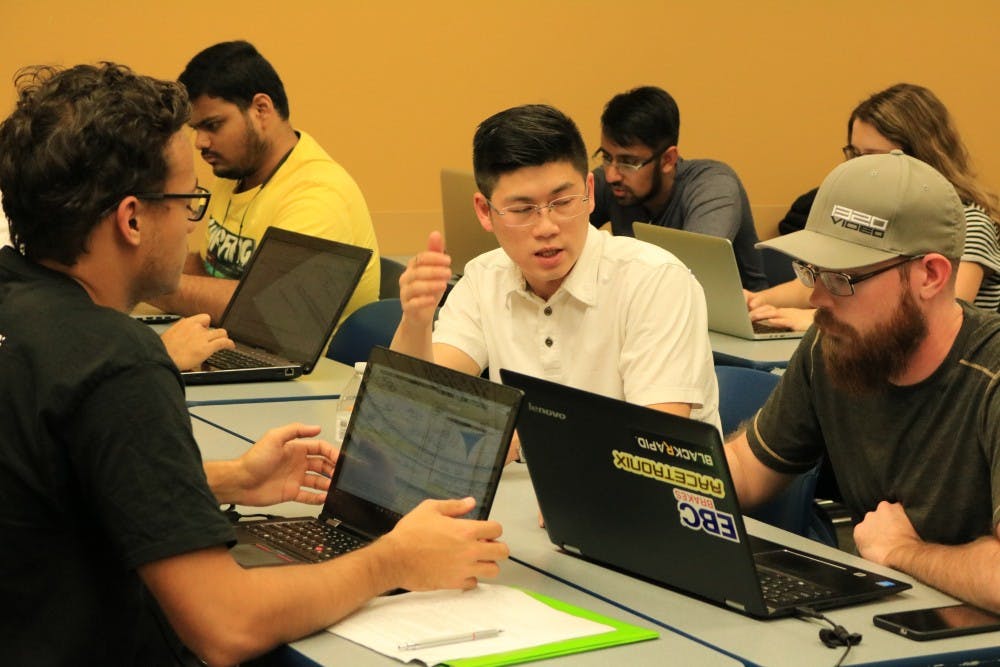To innovation and beyond, ASU's collaboration with NASA and SpaceX inspires students to reach for the stars.
In early January, NASA announced that ASU will lead its first major space exploration mission called “Psyche," which marks the beginning of the University's serious commitment to the ever-expanding space race to discover more information about our vast solar system.
Principal investigator Lindy Elkins-Tanton, director of ASU’s School of Earth and Space Exploration (SESE), spent over five years developing the scientific proposal behind Psyche along with a team of 150 people. Tanton’s proposed mission will help scientists understand how planets form and gain more insight into the complicated past of the solar system.
“The Psyche project will allow ASU students of all majors to come together and work in a collaborative effort to ensure that ASU’s biggest project to date is a success,” Tanton said. “A large-scale project of this caliber will provide many students that are interested in space exploration with a unique opportunity to work closely with NASA.”
In addition to its vast scientific implications, the Psyche mission also has a huge impact on the university's reputation, reinforcing its position as number one in innovation.
But innovative space exploration isn't all ASU has to offer.
A large group of students at ASU are competing in the SpaceX Hyperloop competition to create a mass transit system called "Hyperloop" which is capable of sending pods of passengers and cargo at speed of more than 700 miles per hour.
This futuristic transportation concept designed by the ASU students is cost-effective and practical in terms of design and functionality. Students from a variety of disciples including mechanical engineering, robotics, physics, astrobiology, marketing and business management are involved with this project.
ASU, with the right team, funding, resources and encouragement, has the chance to be a leading force in the future of transportation. A 30-minute trip from Phoenix to Los Angeles now seems like a not-so-distant possibility, and the idea of mass transit at speeds up to 700 mph seems entirely palpable.
With the creative design team, dedicated lab space and funding to purchase materials for prototyping, ASU proves time and time again that it is truly No. 1 in Innovation. Designing the transportation of the future is just one of the many societal challenges ASU has decided to take on, and the implications of these projects will prove to be vastly beneficial to society in the future.
Additionally, the NASA collaboration and Hyperloop Competition will also have a huge impact on the student population at ASU. Undergraduate and graduate students of a variety of disciplines are being encouraged to pursue these rare opportunities, and ASU has all the tools and funding they will need.
These projects prove that ASU is ready for bigger and better challenges — not only will we build our credibility as a top-performing research institute, but we will also let the world know that we know how to play in the big league.
ASU’s opportunity to work closely with NASA and involvement in the SpaceX Hyperloop Competition shows just how hard work, determination and resilience will pay off in the future.
These collaborations will not only reveal exciting new scientific discoveries that will benefit humankind, but they will also spell out numerous unique opportunities for the university and the dedicated students of ASU.
It is vital to ASU's progress to continue to engage in such collaborations in the future.
Reach the columnist at yasmine.mian@asu.edu or follow @yasminemian on Twitter.
Editor’s note: The opinions presented in this column are the author’s and do not imply any endorsement from The State Press or its editors.
Want to join the conversation? Send an email to opiniondesk.statepress@gmail.com. Keep letters under 300 words and be sure to include your university affiliation. Anonymity will not be granted.
Like The State Press on Facebook and follow @statepress on Twitter.




